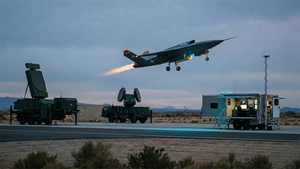
The world is witnessing an unprecedented transformation in content creation, driven by the rapid advancements in AI-generated media. As of November 2025, artificial intelligence has moved beyond mere analysis to become a sophisticated creator, capable of producing remarkably realistic text, images, audio, and video content that is often indistinguishable from human-made work. This seismic shift carries immediate and profound implications across industries, influencing public reception, challenging notions of authenticity, and intensifying the potential for widespread misinformation.
From automated news drafting to hyper-realistic deepfakes, generative AI is redefining the boundaries of creativity and efficiency. While promising immense benefits in productivity and personalized experiences, the rise of synthetic media also ushers in a new era of complex ethical dilemmas, intellectual property debates, and a critical need for enhanced media literacy and robust content verification mechanisms.
Unpacking the Technical Marvels: The Engine Behind Synthetic Realities
The current era of AI-generated media is a testament to groundbreaking technical advancements, primarily propelled by the evolution of deep learning architectures, most notably diffusion models and sophisticated transformer-based systems. These innovations, particularly evident in breakthroughs from 2024 and early 2025, have unlocked capabilities that were once confined to science fiction.
In image generation, models like Google's Imagen 3 are setting new benchmarks for hyper-realism, delivering superior detail, richer lighting, and fewer artifacts by simulating physical light behavior. Text accuracy within AI-generated images, a long-standing challenge, has seen major improvements with tools like Ideogram 3.0 reliably rendering readable and stylistically consistent text. Furthermore, advanced controllability features, such as character persistence across multiple scenes and precise spatial guidance via tools like ControlNet, empower creators with unprecedented command over their outputs. Real-time generation and editing, exemplified by Google's ImageFX and OpenAI's GPT-4o, allow for on-the-fly visual refinement through simple text or voice commands.
Video generation has transitioned from rudimentary animations to sophisticated, coherent narratives. OpenAI's Sora (released December 2024) and Google's Veo 2 (late 2024) are landmark models, producing videos with natural motion, temporal coherence, and significantly improved realism. Runway's Gen-3 Alpha, introduced in 2024, utilizes an advanced diffusion transformer architecture to enhance cinematic motion synthesis and offers features like object tracking and refined scene generation. Audio generation has also reached new heights, with Google's Video-to-Audio (V2A) technology generating dynamic soundscapes based on on-screen action, and neural Text-to-Speech (TTS) systems producing human-like speech infused with emotional tones and multilingual capabilities. In text generation, Large Language Models (LLMs) like OpenAI's GPT-4o, Google's Gemini 2.0 Flash, and Anthropic's Claude 3.5 Sonnet now boast enhanced multimodal capabilities, advanced reasoning, and contextual understanding, processing and generating content across text, images, and audio seamlessly. Lastly, 3D model generation has been revolutionized by text-to-3D capabilities, with tools like Meshy and NVIDIA's GET3D creating complex 3D objects from simple text prompts, making 3D content creation faster and more accessible.
These current approaches diverge significantly from their predecessors. Diffusion models have largely eclipsed older generative approaches like Generative Adversarial Networks (GANs) due to their superior fidelity, realism, and stability. Transformer architectures are now foundational, excelling at capturing complex relationships over long sequences, crucial for coherent long-form content. Crucially, multimodality has become a core feature, allowing models to understand and generate across various data types, a stark contrast to older, modality-specific models. Enhanced controllability, efficiency, and accessibility, partly due to latent diffusion models and no-code platforms, further distinguish this new generation of AI-generated media. The AI research community, while acknowledging the immense potential for democratizing creativity, has also voiced significant ethical concerns regarding bias, misinformation, intellectual property, and privacy, emphasizing the urgent need for responsible development and robust regulatory frameworks.
Corporate Crossroads: AI's Impact on Tech Giants and Innovators
The burgeoning landscape of AI-generated media is creating a dynamic battleground for AI companies, established tech giants, and agile startups, fundamentally reshaping competitive dynamics and strategic priorities. The period leading up to November 2025 has seen monumental investments and rapid integration of these technologies across the sector.
AI companies specializing in core generative models, such as OpenAI (private) and Anthropic (private), are experiencing a surge in demand and investment, driving continuous expansion of their model capabilities. NVIDIA (NASDAQ: NVDA) remains an indispensable enabler, providing the high-performance GPUs and CUDA software stack essential for training and deploying these complex AI models. Specialized AI firms are also flourishing, offering tailored solutions for niche markets, from healthcare to digital marketing. Tech giants, including Alphabet (NASDAQ: GOOGL), Microsoft (NASDAQ: MSFT), Amazon (NASDAQ: AMZN), and Meta (NASDAQ: META), are locked in a "billion-dollar race for AI dominance," making vast investments in AI research, acquisitions, and infrastructure. They are strategically embedding AI deeply into their product ecosystems, with Google expanding its Gemini models, Microsoft integrating OpenAI's technologies into Azure and Copilot, and Meta investing heavily in AI chips for its Llama models and metaverse ambitions. This signals a transformation of these traditionally "asset-light" platforms into "capital-intensive builders" as they construct the foundational infrastructure for the AI era.
Startups, while facing intense competition from these giants, are also finding immense opportunities. AI tools like GitHub Copilot and ChatGPT have dramatically boosted productivity, allowing smaller teams to develop and create content much faster and more cost-effectively, fostering an "AI-first" approach. Startups specializing in niche AI applications are attracting substantial funding, playing a crucial role in solving specific industry problems. Companies poised to benefit most include AI model developers (OpenAI, Anthropic), hardware and infrastructure providers (NVIDIA, Arm Holdings (NASDAQ: ARM), Vertiv Holdings (NYSE: VRT)), and cloud service providers (Amazon Web Services, Microsoft Azure, Google Cloud). Tech giants leveraging AI for integration into their vast ecosystems (Alphabet, Microsoft, Meta) also gain significant strategic advantages.
The competitive landscape is characterized by intense global rivalry, with nations vying for AI leadership. A major implication is the potential disintermediation of traditional content creators and publishers, as AI-generated "Overviews" in search results, for example, divert traffic and revenue. This forces media companies to rethink their content and monetization strategies. The ease of AI content generation also creates a "flood" of new material, raising concerns about quality and the proliferation of "AI slop," which consumers are increasingly disliking. Potential disruptions span content creation, workforce transformation, and advertising models. Strategically, companies are leveraging AI for unprecedented efficiency and cost reduction (up to 60% in some cases), hyper-personalization at scale, enhanced creativity, data-driven insights, and new revenue streams. Investing in foundational AI, building robust infrastructure, and prioritizing ethical AI development are becoming critical strategic advantages in this rapidly evolving market.
A Societal Reckoning: The Wider Significance of AI-Generated Media
The rise of AI-generated media marks a pivotal moment in the broader AI landscape, representing a significant leap in capabilities with profound societal implications. This development, particularly evident by November 2025, fits into a broader trend of AI moving from analytical to generative, from prediction to creation, and from assistive tools to potentially autonomous agents.
Generative AI is a defining characteristic of the "second AI boom" of the 2020s, building upon earlier stages of rule-based and predictive AI. It signifies a paradigm shift where AI can produce entirely new content, rather than merely processing existing data. This transformative capability, exemplified by the widespread adoption of tools like ChatGPT (November 2022) and advanced image and video generators, positions AI as an "improvisational creator." Current trends indicate a shift towards multimodal AI, integrating vision, audio, and text, and a heightened focus on hyper-personalization and the development of AI agents capable of autonomous actions. The industry is also seeing a push for more secure and watermarked generative content to ensure traceability and combat misinformation.
The societal impacts are dual-edged. On one hand, AI-generated media promises immense benefits, fostering innovation, fueling economies, and enhancing human capabilities across personalized education, scientific discovery, and healthcare. For instance, by 2025, 70% of newsrooms are reportedly using some form of AI, streamlining workflows and freeing human journalists for more complex tasks. On the other hand, significant concerns loom. The primary concern is the potential for misinformation and deepfakes. AI's ability to fabricate convincing yet false narratives, videos, and images at scale poses an existential threat to public trust and democratic processes. High-profile examples, such as the widely viewed AI-generated video of Vice President Kamala Harris shared by Elon Musk in July 2024, underscore the ease with which influential figures can inadvertently (or intentionally) amplify synthetic content, eroding trust in factual information and election integrity. Elon Musk himself has been a frequent target of AI deepfakes used in financial scams, highlighting the pervasive nature of this threat. Studies up to November 2025 reveal that popular AI chatbots frequently deliver unreliable news, with a significant percentage of answers being inaccurate or outright false, often presented with deceptive confidence. This blurs the line between authentic and inauthentic content, making it increasingly difficult for users to distinguish fact from fiction, particularly when content aligns with pre-existing beliefs.
Further societal concerns include the erosion of public trust in digital information, leading to a "chilling effect" where individuals, especially vulnerable groups, become hesitant to share personal content online due to the ease of manipulation. Generative AI can also amplify existing biases from its training data, leading to stereotypical or discriminatory outputs. Questions of accountability, governance, and the potential for social isolation as people form emotional attachments to AI entities also persist. Compared to earlier AI milestones like the rule-based systems of the 1950s or the expert systems of the 1980s, generative AI represents a more fundamental shift. While previous AI focused on mimicking human reasoning and prediction, the current era is about machine creativity and content generation, opening unprecedented opportunities alongside complex ethical and societal challenges akin to the societal impact of the printing press in its transformative power.
The Horizon of Creation: Future Developments in AI-Generated Media
The trajectory of AI-generated media points towards a future characterized by increasingly sophisticated capabilities, deeper integration into daily life, and a continuous grappling with its inherent challenges. Experts anticipate rapid advancements in both the near and long term, extending well beyond November 2025.
In the near term, up to late 2025, we can expect the continued rise of multimodal AI, with systems seamlessly processing and generating diverse media forms—text, images, audio, and 3D content—from single, intuitive prompts. Models like OpenAI's successors to GPT and xAI's Grok Imagine 0.9 are at the forefront of this integration. Advanced video and audio generation will see further leaps, with text-to-video models such as OpenAI's Sora, Google DeepMind's Veo 3, and Runway delivering coherent, multi-frame video clips, extended footage, and synchronized audio for fully immersive experiences. Real-time AI applications, facilitated by advancements in edge computing and 6G connectivity, will become more prevalent, enabling instant content generation for news, social media, and dynamic interactive gaming worlds. A massive surge in AI-generated content online is predicted, with some forecasts suggesting up to 90% of online content could be AI-generated by 2026, alongside hyper-personalization becoming a standard feature across platforms.
Looking further ahead, beyond 2025, AI-generated media is expected to reach new levels of autonomy and immersion. We may see the emergence of fully autonomous marketing ecosystems that can generate, optimize, and deploy content across multiple channels in real time, adapting instantaneously to market changes. The convergence of generative AI with augmented reality (AR), virtual reality (VR), and extended reality (XR) will enable the creation of highly immersive and interactive content experiences, potentially leading to entirely AI-created movies and video games, a goal xAI is reportedly pursuing by 2026. AI is also predicted to evolve into a true creative partner, collaborating seamlessly with humans, handling repetitive tasks, and assisting in idea generation. This will necessitate evolving legal and ethical frameworks to define AI ownership, intellectual property rights, and fair compensation for creators, alongside the development of advanced detection and authenticity technologies that may eventually surpass human capabilities in distinguishing real from synthetic media.
The potential applications are vast, spanning content creation, marketing, media and entertainment, journalism, customer service, software engineering, education, e-commerce, and accessibility. AI will automate hyper-personalized emails, product recommendations, online ads, and even full video content with voiceovers. In journalism, AI can automate routine reporting, generate financial reports, and provide real-time news updates. However, significant challenges remain. The proliferation of misinformation, deepfakes, and disinformation poses a serious threat to public trust. Unresolved issues surrounding copyright infringement, intellectual property, and data privacy will continue to be litigated and debated. Bias in AI models, the lack of transparency, AI "hallucinations," and the workforce impact are critical concerns. Experts generally predict that human-AI collaboration will be key, with AI augmenting human capabilities rather than fully replacing them. This will create new jobs and skillsets, demanding continuous upskilling. A growing skepticism towards AI-generated public-facing content will necessitate a focus on authenticity, while ethical considerations and responsible AI development will remain paramount, driving the evolution of legal frameworks and the need for comprehensive AI education.
The Dawn of a New Creative Era: A Concluding Perspective
The journey of AI-generated media, culminating in its current state as of November 2025, marks a watershed moment in the history of technology and human creativity. What began as rudimentary rule-based systems has blossomed into sophisticated generative models capable of crafting compelling narratives, lifelike visuals, and immersive audio experiences. This transformative evolution has not only redefined the economics of content creation, making it faster, cheaper, and more scalable, but has also ushered in an era of hyper-personalization, tailoring digital experiences to individual preferences with unprecedented precision.
Historically, the progression from early AI chatbots like ELIZA to the advent of Generative Adversarial Networks (GANs) in 2014, and subsequently to the public proliferation of models like DALL-E, Midjourney, Stable Diffusion, and ChatGPT in the early 2020s, represents a monumental shift. The current focus on multimodal AI, integrating diverse data types seamlessly, and the emergence of autonomous AI agents underscore a trajectory towards increasingly intelligent and self-sufficient creative systems. This period is not merely an incremental improvement; it is a fundamental redefinition of the relationship between humans and machines in the creative process, akin to the societal impact of the printing press or the internet.
Looking ahead, the long-term impact of AI-generated media is poised to be profound and multifaceted. Economically, generative AI is projected to add trillions to the global economy annually, fundamentally restructuring industries from marketing and entertainment to journalism and education. Societally, the lines between human and machine creativity will continue to blur, necessitating a re-evaluation of authenticity, originality, and intellectual property. The persistent threat of misinformation and deepfakes will demand robust verification mechanisms, media literacy initiatives, and potentially new forms of digital trust infrastructure. The job market will undoubtedly shift, creating new roles requiring skills in prompt engineering, AI ethics, and human-AI collaboration. The ultimate vision is one where AI serves as a powerful amplifier of human potential, freeing creators from mundane tasks to focus on higher-level strategy and innovative storytelling.
In the coming weeks and months, several key areas warrant close attention. Expect further breakthroughs in multimodal AI, leading to more seamless and comprehensive content generation across all media types. The development of agentic and autonomous AI will accelerate, transitioning AI tools from "copilots" to "teammates" capable of managing complex workflows independently. The critical discussions around ethical AI and regulations will intensify, with growing calls for mandatory AI disclosure, stricter penalties for misinformation, and clearer guidelines on intellectual property rights. We will likely see the emergence of more specialized AI models tailored for specific industries, leading to deeper vertical integration. The focus will remain on optimizing human-AI collaboration, ensuring that these powerful tools augment, rather than replace, human creativity and oversight. Lastly, as AI models grow more complex and energy-intensive, sustainability concerns will increasingly drive efforts to reduce the environmental footprint of AI development and deployment. Navigating this transformative era will require a balanced approach, prioritizing human ingenuity, ethical considerations, and continuous adaptation to harness AI's immense potential while mitigating its inherent risks.
This content is intended for informational purposes only and represents analysis of current AI developments.
TokenRing AI delivers enterprise-grade solutions for multi-agent AI workflow orchestration, AI-powered development tools, and seamless remote collaboration platforms.
For more information, visit https://www.tokenring.ai/.






